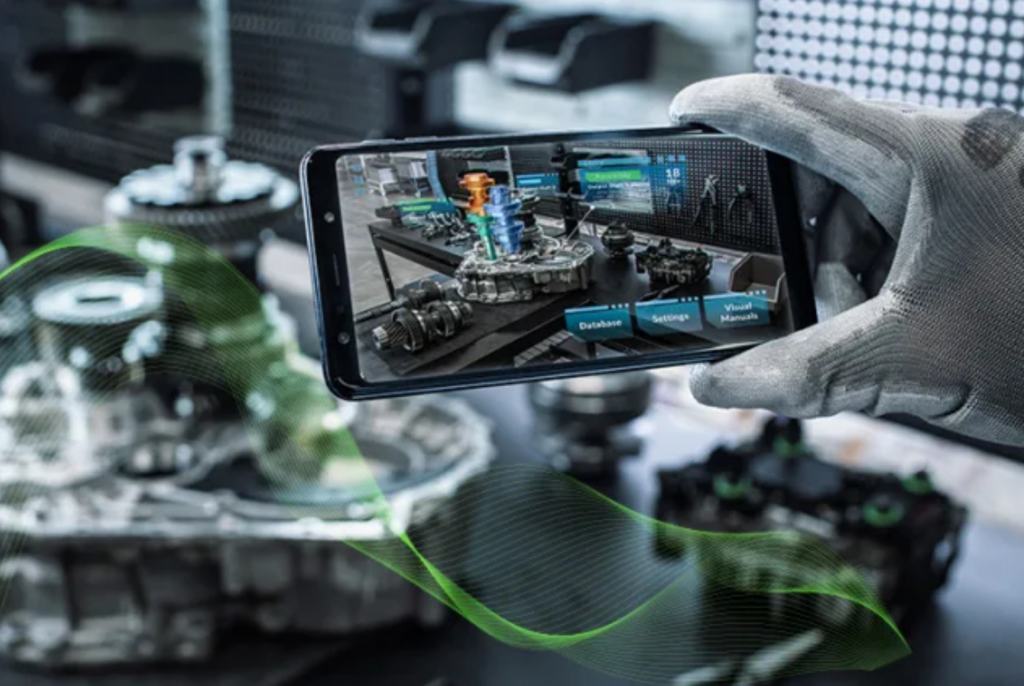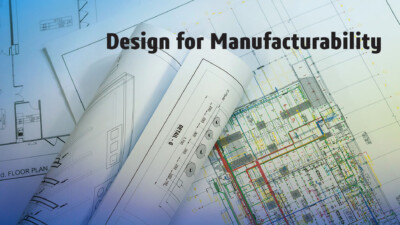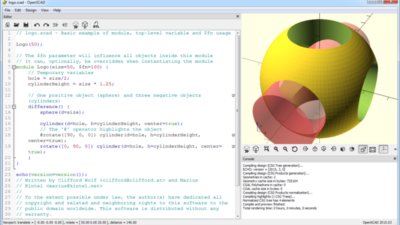AR has never been more accessible, and engineers are using it to help design, build and sell better products.
Augmented reality (AR) technology gives the real world some virtual spice, and it’s getting hotter.
If you’ve bought a phone or tablet in the last few years, there’s a good chance it includes a lidar sensor to support AR applications. You may have partaken in some AR games—Pokémon Go is the classic example—or used AR to see what some desired product, such as a piece of furniture, would look like in your living room.
Just as AR is augmenting our everyday lives, it’s also augmenting the lives of engineers and manufacturing professionals. Here’s a primer on the technology and how it’s being used in engineering.
What is augmented reality (AR)?
Augmented reality is a type of spatial computing that adds a graphical overlay onto an image of the real world. AR goes beyond a heads-up display, or HUD, in which static info is presented to the user overtop their surroundings. A hallmark of AR, and of spatial computing more broadly, is that the graphical output depends on the user’s position in space.

For instance, an AR application that places a virtual sofa in your living room would respond to your position in that room. Whether looking through a phone, tablet or head-mounted display (HMD), you could move around the virtual sofa and see it from different angles while it remained fixed in place.
If you were using the highest-end AR hardware with an exceptionally photorealistic 3D model, you could be fooled into thinking you really had a new sofa—at least until you tried to sit on it. For engineers using AR, that level of photorealism is often desired.
How are engineers and manufacturers using AR?
One popular way that engineers are using AR is to visualize their designs as they would exist in the real world. Automotive engineers, for example, could use an AR headset to see a life-size model of their latest vehicle right before their eyes.
With the proper hardware and software, they could even map the lighting and reflections of the real world onto the AR model—heightening the illusion of a real, physical vehicle. In this way, AR can provide a level of design insight not easily achieved without laborious prototyping.
Another emerging use of AR is as a tool for factory commissioning, maintenance and training. AR applications can present information about a piece of equipment on top of that equipment, such as visual instructions for how to operate it safely or change out a part. Similarly, AR could help plan or optimize a factory layout by revealing how a piece of equipment would physically fit in a space.

Once products are designed and built, AR is becoming an increasingly useful tool for selling them. Online product configurators that support AR allow users to see exactly what they’re buying, and in exactly the environment they’re buying them for. Nothing makes you want to buy a real car more than the tantalizing simulacrum of a virtual car in your driveway.
What types of hardware support AR?
Unlike virtual reality, which requires the user to don an opaque head-mounted display, augmented reality can be achieved with a more versatile range of computing hardware. Phones, tablets, low-profile smart glasses and HMDs can all be used for AR. This flexibility makes AR more accessible than VR, especially in the field or on the factory floor.
Not all hardware makes for an equal AR experience. Using a phone or tablet for AR may be convenient, but the quality, spatial stability and responsiveness of the AR models won’t be as good as with a high end headset. For engineers hoping to use AR to evaluate their designs, an HMD will provide the best experience. However, HMDs also range in quality and features from one manufacturer to the next. Additionally, for many users, headsets are uncomfortable to wear for long periods of time.
Ultimately, the best hardware for your AR needs will be dependent on your application, your software and your budget. As more devices emerge to support augmented reality and other types of spatial computing, more engineering applications of this spicy technology will be close behind.



